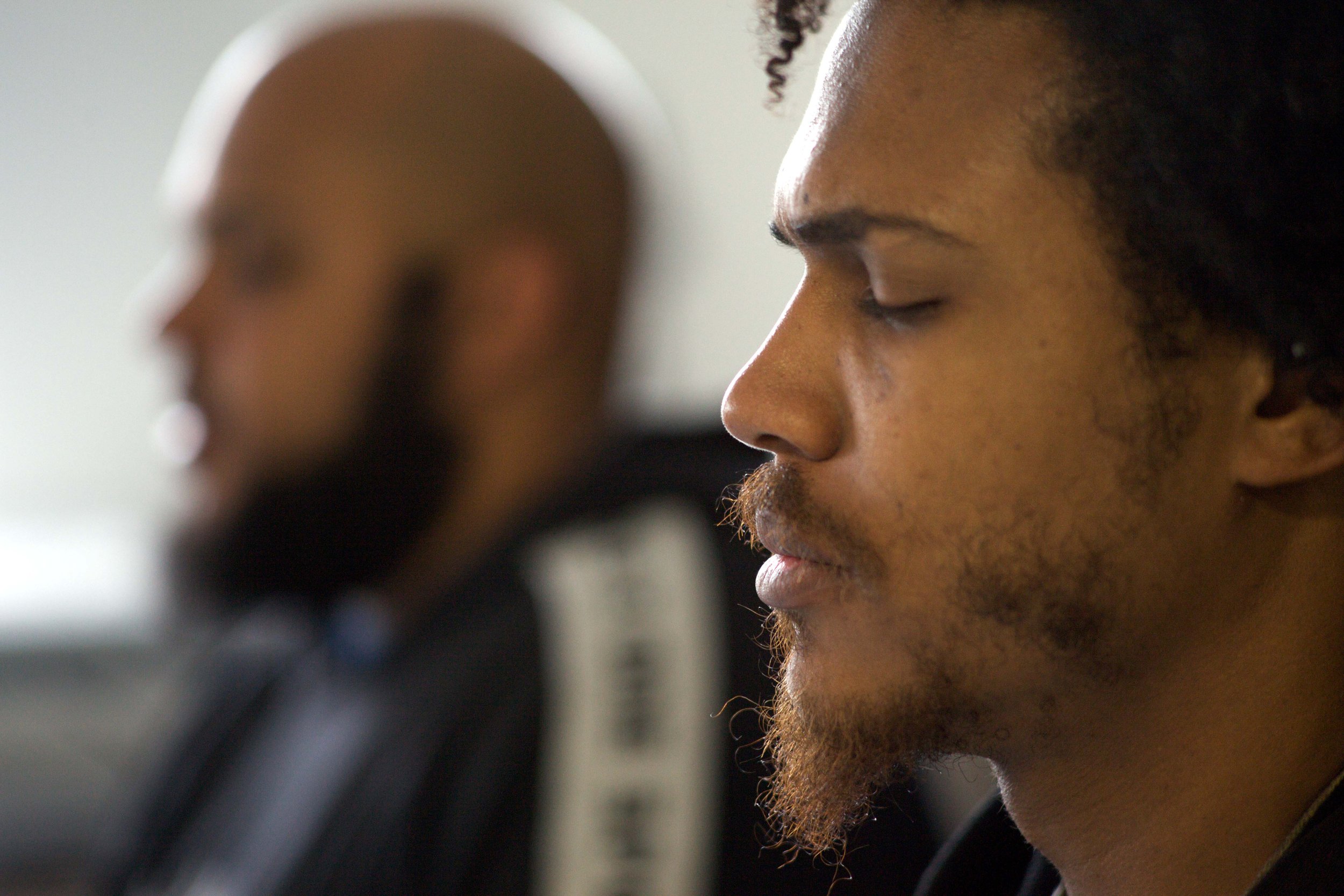
The Importance of Mindfulness & Yoga
The Research
Growing up in urban communities, such as East or West Baltimore, can be challenging due to limited resources, high rates of unemployment, homelessness, and crime. Research has shown that children and adolescents who grow up in poor neighborhoods often face developmental challenges in the areas of social, emotional, and cognitive development.
Traumatic and stressful experiences are common among urban youth, and range from major life events such as child abuse or divorce, to chronic interpersonal stress like family conflict, to daily hassles such as lack of transportation. These experiences have been identified as risk factors for a range of psychological problems, including internalizing and externalizing issues.
Furthermore, the risk of academic failure, school dropout, school bullying, and aggression in response to exposure to traumatic events is higher for youth growing up in high-poverty neighborhoods. Unfortunately, despite their increased risk for psychological problems, urban youth are less likely to receive help.
To address these challenges, self-regulation skills and coping mechanisms are essential. Each day, both adults and children face stressful events that require regulation skills.
Research suggests that participating in yoga can benefit individuals both mentally and physically. According to studies by the American College of Sports Medicine, yoga strengthens and lengthens muscles while providing a total body workout. It also enhances overall fitness, boosting strength, flexibility, and heart health. Additionally, yoga improves overall bone health and has even been proven to help teens with irritable bowel syndrome.
Aside from the physical health benefits, yoga has major mental potential. For instance, students with attention-deficit hyperactivity disorder have benefited from yoga as it helps them concentrate. Studies have also found that students improve their attitudes toward themselves and their behavior (as seen in the vastly lower rate of discipline referrals) through participation in yoga classes. Students report increased self-esteem and a boost in overall mood.
Mindfulness & Youth
Mindfulness, mediation, breathing exercises, yoga (contemplative exercises) have shown benefits for the group of Youth At-Risk, including:
Resiliency and Optimism
Stress Reduction
Social competence and pro-social behaviors
Academic success (Improvement in grades, better school functioning)
Healing Trauma
Self-Love
Self-Worth
Empathy and Compassion
Positive Mental Health Outcomes
Yoga provides physical benefits such as:
Strengthening and lengthening muscles while providing a total body workout
Enhancing overall fitness, boosting strength, flexibility, heart health and bone health.
Over the years, we have collaborated with different research institutions, such as the Johns Hopkins Bloomberg School of Public Health, Penn State University, Loyola University, University of Baltimore. See below to find all references to the peer-reviewed publications.
The Holistic Life Foundation conducted a pilot randomized trial in partnership with Johns Hopkins Bloomberg School of Public Health, The Prevention Center at Penn State, and the Baltimore School District. The trial aimed to assess the effectiveness of yoga for inner-city students in Grades 4 and 5. The research group from Johns Hopkins and Penn State found positive effects of the intervention on students’ response to stress, significantly improved abilities to regulate their emotions, and significantly lowered rates of rumination, as well as other positive effects. These findings were published in the Journal of Abnormal Child Psychology (Mendelson et al., 2010). The pilot trial and Holistic Life Foundation’s work received media coverage on Making a Difference on the NBC Nightly News with Brian Williams, and other venues. Kennedy Kreiger did a study about ACE's scores, and programs that help communities heal from them, highlighting the work that Holistic Life Foundation does. See studies below.
The Research
-
Research has shown that practicing mindfulness can have various positive effects on the brain and cognitive functions, such as:
• Less mind wandering due to an activation of the default-mode network (DMN) activation, which improves attentional capacities.
• Increased grey matter in the amygdala, the area responsible for emotional experience, and decreased amygdala activation, leading to better emotional regulation.
• Increased hippocampus density, which is seen as the center of emotion, memory formation, and the autonomic nervous system.
• Positive effects on the prefrontal cortex, the area involved in higher-order executive functions such as attention regulation, decision-making, and regulating social behaviors.
-
-
-
-
-
-
-
References to HLF articles
-
Ancona, M. R., & Mendelson, T. (2014). Feasibility and preliminary outcomes of a yoga and mindfulness intervention for schoolteachers. Advances in School Mental Health Promotion, 7(3), 156-170. doi
-
Dariotis, J. K., Mirabal-Beltran, R., Cluxton-Keller, F., Gould, L. F., Greenberg, M. T., & Mendelson, T. (2016). A qualitative evaluation of student learning and skills use in a school-based mindfulness and yoga program. Mindfulness, 7(1), 76-89.doi.
-
Dariotis, J. K., Cluxton-Keller, F., Mirabal-Beltran, R., Gould, L. F., Greenberg, M. T., & Mendelson, T. (2016). “The program affects me ‘cause it gives away stress”: Urban students’ qualitative perspectives on stress and a school-based mindful yoga intervention. Explore: The Journal of Science and Healing, 12(6): 443-450. doi
-
Feagans Gould, L., Mendelson, T., Dariotis, J. K., Ancona, M., Smith, A. S. R., Gonzalez, A. A., Smith, A. A., & Greenberg, M. T. (2014). Assessing fidelity of core components in a mindfulness and yoga intervention for urban youth: applying the CORE Process. New Directions for Youth Development, 142: 59-81. doi: 10.1007/s12671-015-0395-6.
-
Mendelson, T., Dariotis, J. K., Feagans Gould, L., Smith, A. S. R., Smith, A. A., Gonzalez, A. A., & Greenberg, M. T. (2013). Implementing mindfulness and yoga in urban schools: A community-academic partnership. Journal of Children’s Services, 8(4), 276–291. doi: 10.1108/JCS-07-2013-0024.
-
Semple, R. J., Droutman, V., & Reid, B. A. (2017). Mindfulness goes to school: Things learned (so far) from research and real-world experiences. Psychology in the Schools, 54(1), 69–81. doi: 10.1002/pits.21981.
-




